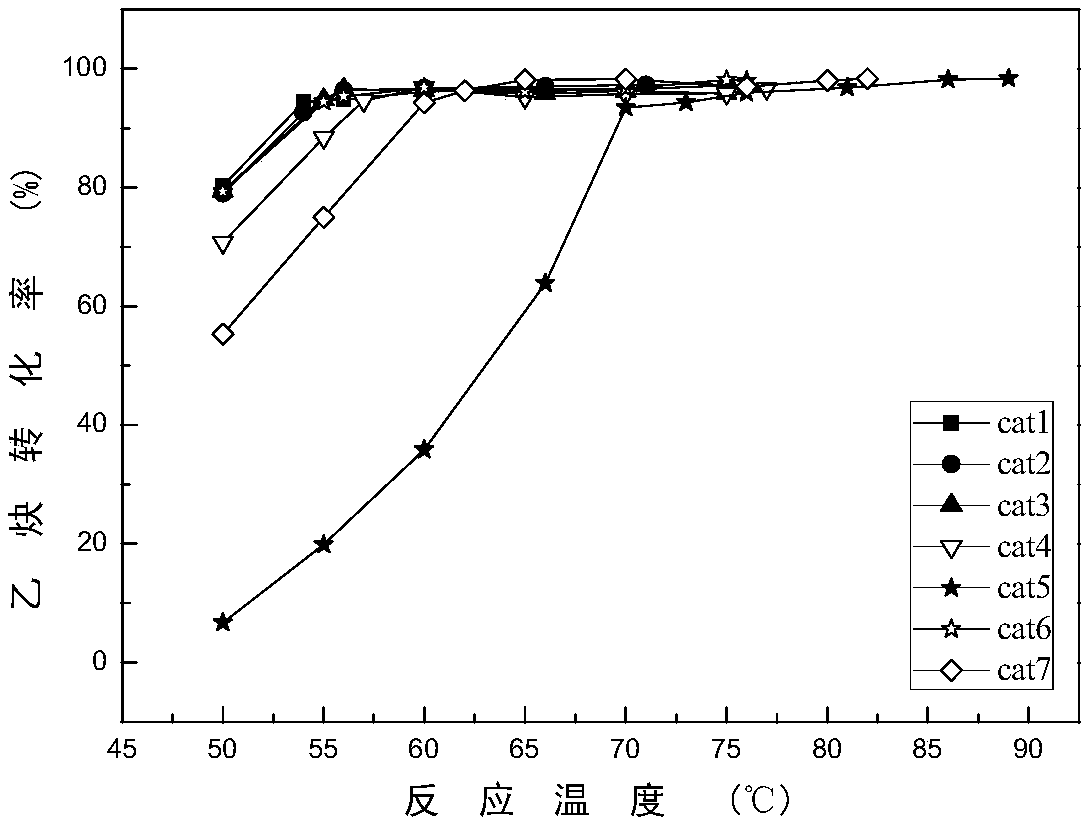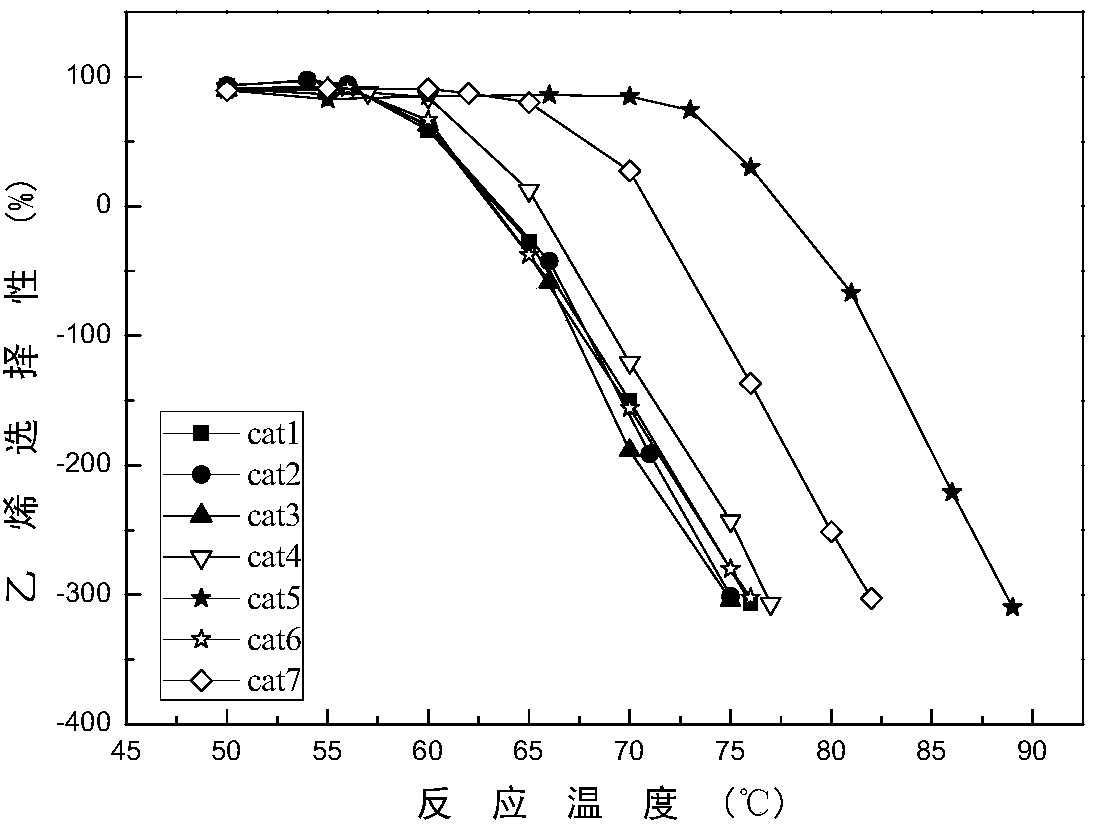Ex-situ pre-reduction and passivation treatment method for acetylene pre-hydrogenation catalyst
A hydrogenation catalyst and passivation treatment technology, applied in chemical instruments and methods, catalyst activation/preparation, metal/metal oxide/metal hydroxide catalysts, etc. Affecting problems such as normal driving, achieving high catalytic activity and selectivity, easy storage and transportation, and good economic benefits
- Summary
- Abstract
- Description
- Claims
- Application Information
AI Technical Summary
Problems solved by technology
Method used
Image
Examples
Embodiment 1
[0034] Weigh 1g 20-40 mesh Pd-Ag / Al 2 o 3 The catalyst (cat0) was loaded into the reactor for pre-reduction and passivation treatment. At normal pressure, the volumetric space velocity is 3000h -1 of pure H 2 Under the conditions, the temperature was programmed at a rate of 1 °C / min to 130 °C for 3 h, and the H 2 Switch to N 2 , turn off the power supply of the heating mantle and cool down to 50°C to start passivation treatment, and turn on N 2 and 5%O 2 , 95% N 2 passivation of the gas mixture, by adjusting the N2 and the flow rate of mixed gas to adjust the concentration of passivation gas, O 2 The molar concentration was gradually increased from 0.61% to 5.0% through eight gradients, and each concentration was maintained for 30 minutes. After that, the volumetric space velocity is 3000h -1 The air continued to passivate for 10h, and the catalyst cat1 was obtained;
[0035] The molar concentration gradient of oxygen is: 0.61%, 0.97%, 1.27%, 1.75%, 2.13%, 2.42%, 3.2...
Embodiment 2
[0037] The specific implementation process is roughly the same as in Example 1, except that the passivation temperature is constant at 50° C., and the obtained passivated catalyst is cat2.
Embodiment 3
[0039] The specific implementation process is roughly the same as in Example 1, except that the passivation temperature is constant at 30° C., and the obtained passivated catalyst is cat3.
PUM
 Login to View More
Login to View More Abstract
Description
Claims
Application Information
 Login to View More
Login to View More - R&D
- Intellectual Property
- Life Sciences
- Materials
- Tech Scout
- Unparalleled Data Quality
- Higher Quality Content
- 60% Fewer Hallucinations
Browse by: Latest US Patents, China's latest patents, Technical Efficacy Thesaurus, Application Domain, Technology Topic, Popular Technical Reports.
© 2025 PatSnap. All rights reserved.Legal|Privacy policy|Modern Slavery Act Transparency Statement|Sitemap|About US| Contact US: help@patsnap.com



